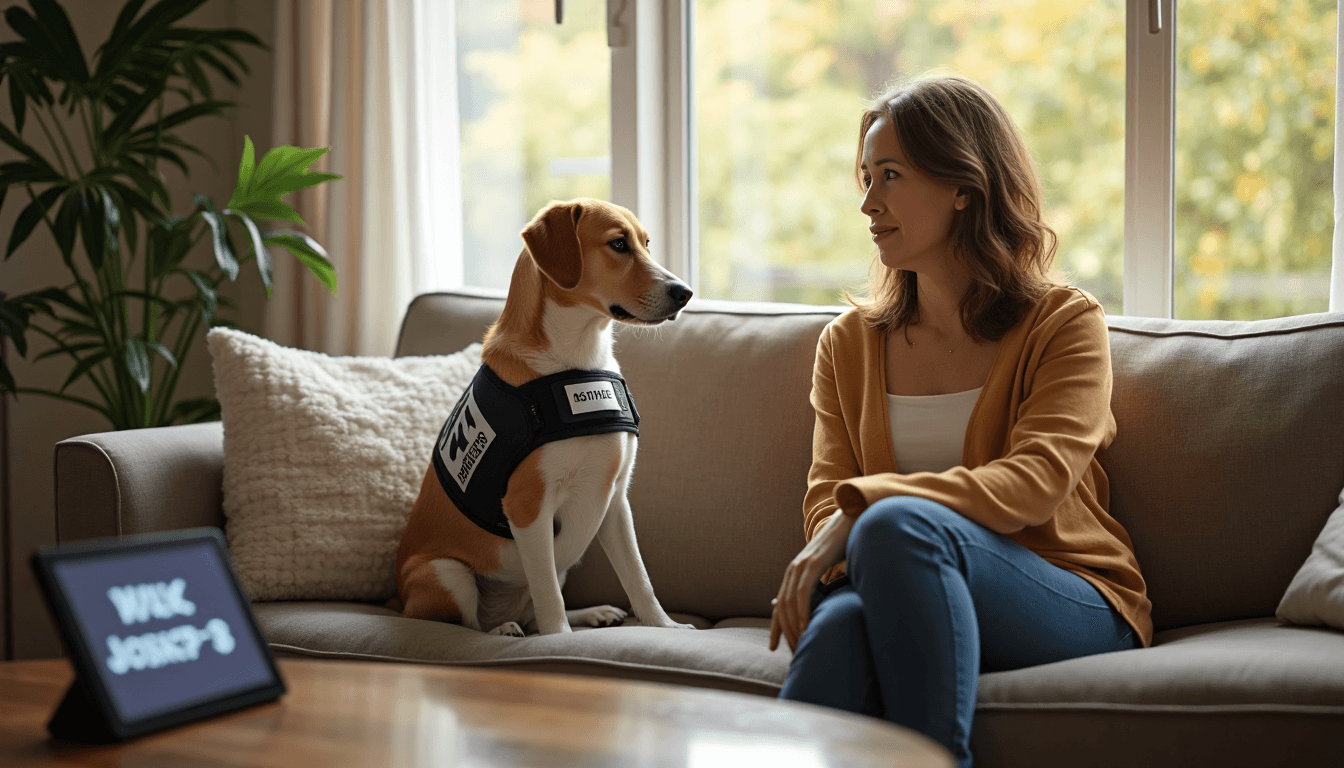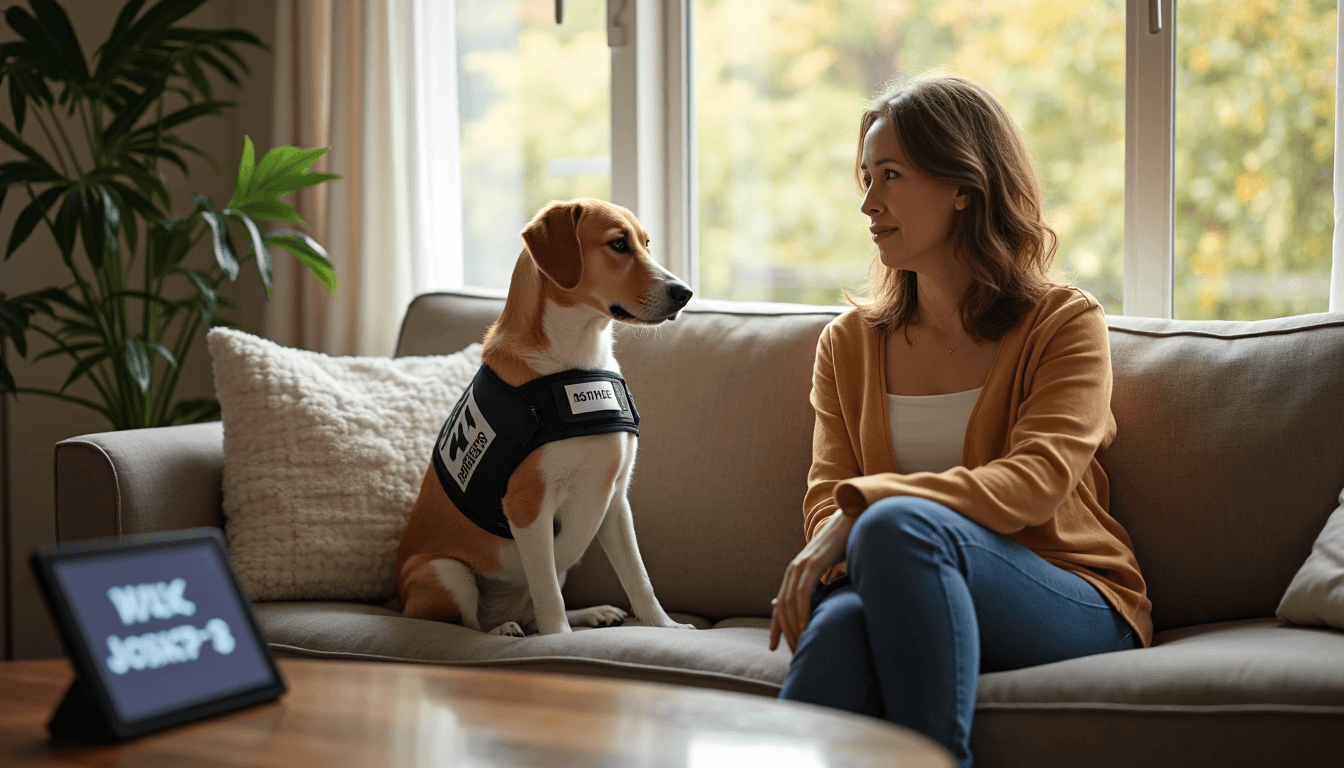
Dog alert systems have changed the game for owners and handlers. Medical alert dogs can detect blood sugar changes with up to 87.5 percent sensitivity—a jaw-dropping stat for anyone managing diabetes. Here’s the surprise though. The latest breakthroughs are not even about the dogs’ noses. The real leap forward is how technology and advanced training now let dogs trigger emergency signals through touchscreens and wearables, opening up a whole new way for them to protect and communicate.
Table of Contents
- How Dog Alert Systems Work Today
- Types Of Alert Dogs And Their Training
- Choosing The Right Dog Alert System For Your Needs
- Real Life Benefits For Owners And Handlers
Quick Summary
| Takeaway | Explanation |
|---|---|
| Advanced Technologies Enhance Communication | Modern dog alert systems utilize wearable sensors, AI, and machine learning to improve the communication between dogs and handlers, enabling dogs to alert their owners to emergencies effectively. |
| Specialized Training is Crucial | Effective dog alert systems depend on precise training methodologies, including scent discrimination and behavioral signal recognition, to prepare dogs for various medical emergencies or safety concerns. |
| Consider Individual Needs When Choosing a System | Selecting the right dog alert system requires a thorough assessment of the handler’s medical conditions, lifestyle factors, and communication preferences to enhance safety and independence. |
| Overall Benefits Include Health and Emotional Support | Dog alert systems significantly improve the quality of life for users by managing health conditions, providing emotional support, and increasing personal autonomy through reliable communication with their canine partners. |
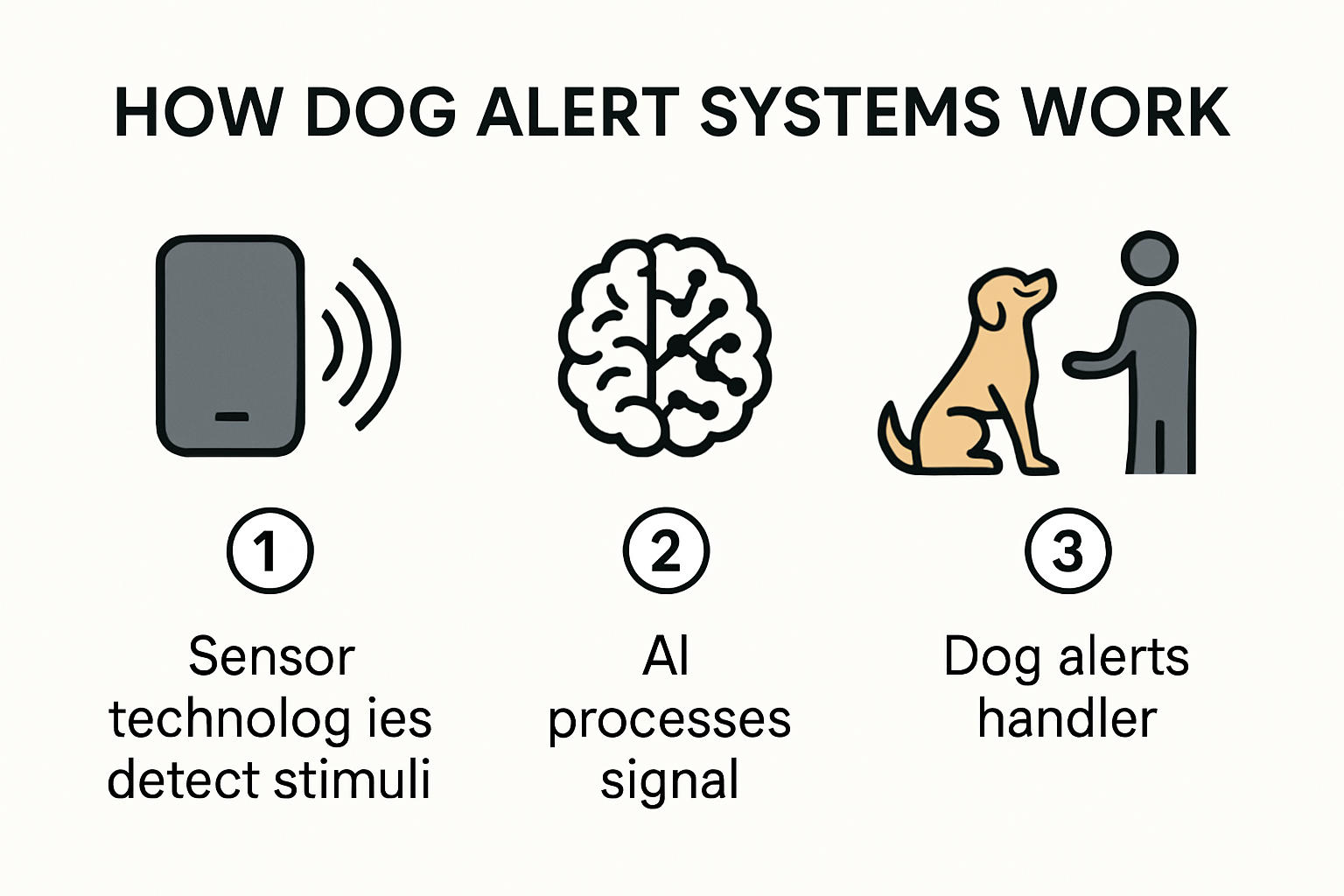
How Dog Alert Systems Work Today
Dog alert systems have transformed dramatically in recent years, leveraging advanced technology to create sophisticated communication platforms between humans and canines. These systems enable dogs to communicate critical information quickly and effectively across various scenarios.
Core Communication Mechanisms
Modern dog alert systems operate through multiple innovative pathways. Wearable sensor technologies now allow dogs to transmit critical signals using integrated electronic interfaces. Dogs can activate alerts through specialized buttons, pressure-sensitive devices, or even advanced machine learning algorithms that interpret their behavioral patterns.
According to research from ACM Digital Library, medical alert dogs can now be trained to operate touchscreens mounted in homes, demonstrating remarkable capability to locate and interact with alert interfaces. This technological advancement represents a significant leap in canine communication systems.
Training and Signal Recognition
Successful dog alert systems depend heavily on precise training methodologies. Research published in PubMed reveals that dogs trained with marker signals like clickers demonstrate superior performance in odor discrimination tasks and maintain more accurate alert responses. These training techniques help dogs understand specific communication protocols and consistently execute alert behaviors.
The training process involves teaching dogs to recognize specific situations requiring human intervention. This might include medical emergencies, environmental hazards, or personal safety concerns. Dogs learn to associate particular actions with generating an alert, such as pressing a designated button or using a specific body language signal that triggers a monitoring system.
Advanced Monitoring Technologies
Cutting-edge dog alert systems now incorporate machine learning and artificial intelligence to enhance communication capabilities. A study published in Applied Sciences demonstrated an automated system using wearable sensors that can analyze a dog’s activity and emotional patterns in real-time. These sophisticated technologies enable more nuanced and accurate communication between dogs and their handlers.
These systems can track physiological indicators, movement patterns, and even subtle behavioral changes that might signal potential issues. For individuals with disabilities or those requiring constant canine assistance, such technologies represent a breakthrough in safety and independence. The ability to understand and respond to a dog’s alert signals can mean the difference between immediate intervention and potential crisis.
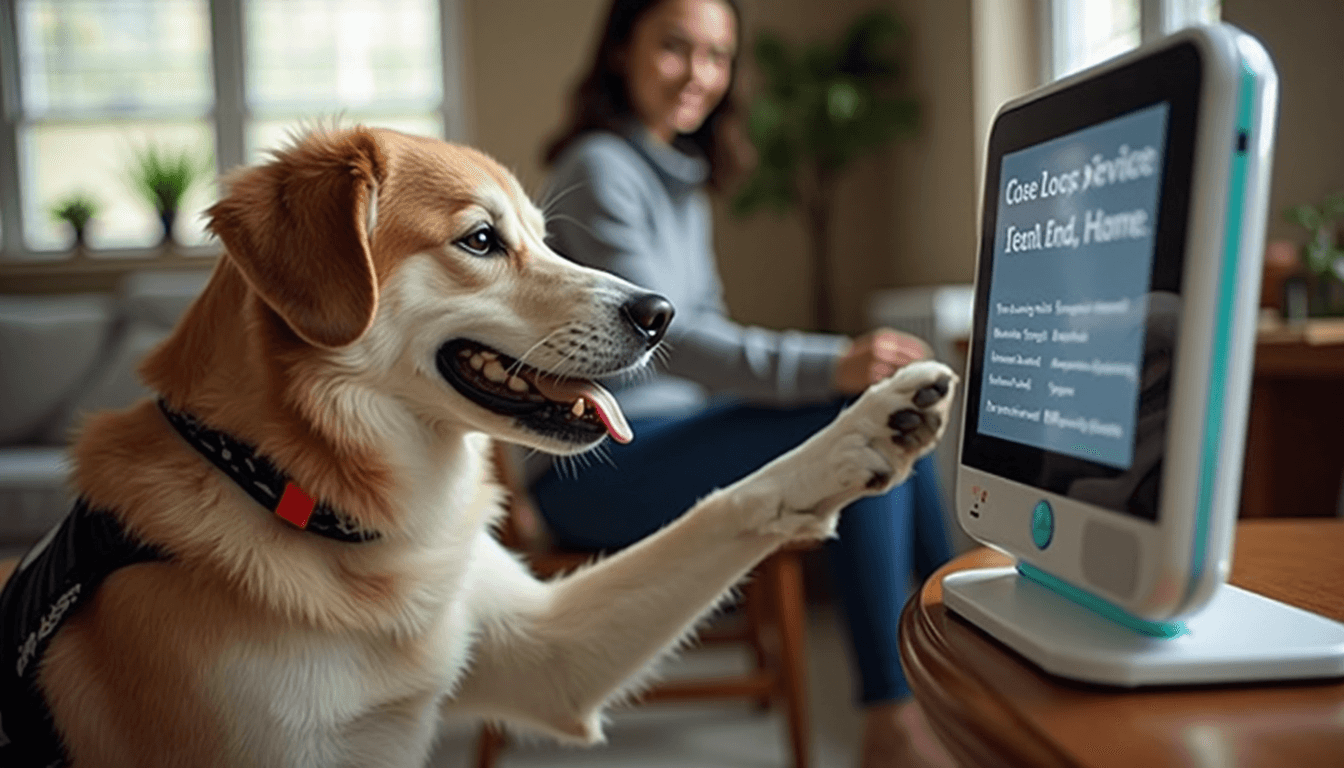
The evolution of dog alert systems continues to push boundaries, transforming how we understand and interact with our canine companions. By combining advanced sensor technologies, precise training methodologies, and intelligent monitoring systems, we are creating more responsive and reliable communication platforms that enhance safety and connection between humans and dogs.
Types of Alert Dogs and Their Training
Alert dogs represent a critical category of working canines trained to provide specialized support across various medical and safety scenarios. These remarkable animals undergo extensive training to develop precise communication and intervention skills that can potentially save lives.
Medical Alert Dog Specializations
Medical alert dogs represent a sophisticated category of service animals specifically trained to detect and respond to complex health conditions. Learn more about specialized alert options for different medical needs.
Diabetic Alert Dogs: According to research published in Diabetes Therapy, diabetic alert dogs demonstrate remarkable capabilities in detecting blood glucose variations. Studies show these dogs can identify hypoglycemic episodes with sensitivities ranging from 50% to 87.5% and specificities between 50% and 97.9%. These dogs are trained to recognize subtle physiological changes associated with blood sugar fluctuations, providing critical early warnings to their handlers.
Seizure Alert Dogs: Medical research indicates that some dogs can be trained to provide seizure warnings 15 to 45 minutes before an episode occurs. These dogs learn to recognize specific behavioral and physiological precursors that signal an impending seizure, enabling individuals to seek safety or take preventative medication.
Here is a table summarizing the key specializations of medical alert dogs, the conditions they detect, and reported effectiveness based on research mentioned:
| Dog Type | Detected Condition | Detection Lead Time/Sensitivity | Research Findings |
|---|---|---|---|
| Diabetic Alert Dog | Blood Glucose Variations | Sensitivity: 50%-87.5%; Specificity: 50%-97.9% | Can alert to hypoglycemia/hyperglycemia; early warnings |
| Seizure Alert Dog | Seizure Episodes | 15–45 min before seizure (lead time) | Can recognize impending seizures in advance |
| Psychological Support Dog | Anxiety/PTSD Triggers | Not specified | Trained for psychological and neurological cues |
| Environmental Alert Dog | Hazards (gas, temp, allergens) | Not specified | Detects environmental risks for handler |
Specialized Training Methodologies
Training alert dogs requires extensive specialized preparation that goes far beyond standard service dog training. The process involves multiple complex stages designed to develop precise sensory recognition and appropriate response mechanisms.
Initial training focuses on scent discrimination and physiological signal recognition. Research from PubMed involving glycemia alert dogs revealed that comprehensive training can achieve median sensitivity of 70% in detecting out-of-range blood glucose episodes. This requires dogs to develop an extraordinary ability to detect minute biochemical changes in their handler’s body.
Training protocols typically involve:
- Intensive scent recognition techniques
- Behavioral signal interpretation
- Stress response management
- Consistent reward-based learning systems
Emerging Alert Dog Categories
Beyond traditional medical alert roles, emerging categories of alert dogs are expanding the boundaries of canine assistance. These include psychological support dogs trained to recognize anxiety attacks, PTSD triggers, and other complex neurological conditions.
Environmental alert dogs are another emerging category. These dogs learn to detect potential hazards like gas leaks, extreme temperature changes, or specific allergens. Their training involves developing heightened sensory awareness and learning precise communication protocols to alert their handlers effectively.
The evolution of alert dog training represents a remarkable intersection of animal behavior science, medical understanding, and technological innovation. As our comprehension of canine capabilities continues to grow, these extraordinary animals are becoming increasingly sophisticated partners in health monitoring and personal safety.
Choosing the Right Dog Alert System for Your Needs
Selecting the appropriate dog alert system requires careful consideration of individual needs, medical conditions, lifestyle factors, and specific communication requirements. The right system can significantly enhance safety, independence, and communication between dogs and their handlers.
Assessing Individual Medical and Safety Requirements
Explore the best alert options tailored to specific needs. The selection process begins with a comprehensive evaluation of the handler’s unique circumstances. According to research from the National Protective Security Authority, evidence-based practices are crucial when implementing detection and alert systems.
Key factors to consider include:
- Specific medical conditions
- Frequency and type of potential emergencies
- Handler’s mobility and independence level
- Living environment and support network
- Budget and long-term maintenance costs
Physiological Compatibility: A scientific study published in Applied Animal Behaviour Science recommends combining behavioral assessments with physiological measures. This approach helps identify dogs with optimal cardiac and hormonal characteristics for service work, ensuring a more precise match between the dog and handler.
Here is a checklist table to help you evaluate the essential requirements when selecting a dog alert system:
| Requirement | Why It Matters | Consider Status (Yes/No) |
|---|---|---|
| Medical Condition Identification | Ensures alerts are relevant to your health needs | |
| Emergency Frequency Assessment | Matches system responsiveness to actual risk | |
| Mobility & Independence Level | Determines need for advanced tech or assistance | |
| Living Environment Evaluation | Addresses unique home or community safety factors | |
| Budget and Maintenance Planning | Prepares for long-term investment and care costs | |
| Behavioral & Physiological Compatibility | Improves match between dog and handler |
Technology and Training Considerations
Modern dog alert systems incorporate advanced technologies that extend beyond traditional communication methods. Research from ResearchGate demonstrates that dogs can be trained to operate touchscreens for emergency notifications, opening new possibilities for communication and safety.
Consider these technological features:
- Wearable sensor integration
- Touchscreen alert interfaces
- Machine learning adaptation capabilities
- Real-time monitoring systems
- Customizable alert protocols
Training compatibility is equally critical. The alert system should align with the dog’s existing training and the handler’s communication preferences. Some systems require extensive retraining, while others can integrate seamlessly with established behavioral patterns.
Practical Implementation and Support
Beyond technical specifications, practical considerations play a significant role in selecting the right alert system. Evaluate the support infrastructure, including:
- Training resources
- Technical support availability
- Compatibility with existing medical devices
- Upgrade and maintenance options
- Potential insurance or healthcare coverage
Consult with medical professionals, service dog trainers, and specialized alert system providers to develop a comprehensive understanding of available options. Each handler’s situation is unique, and a personalized approach ensures the most effective communication and safety solution.
The ideal dog alert system should feel like a natural extension of the human-canine relationship. It must provide reliability, intuitive communication, and a sense of security that empowers both the handler and the dog to navigate daily challenges with confidence and independence.
Real Life Benefits for Owners and Handlers
Dog alert systems represent more than technological innovation. They are transformative tools that dramatically improve quality of life for individuals facing complex medical challenges, providing unprecedented levels of independence, safety, and emotional support.
Health Management and Emergency Prevention
Discover how alert systems enhance daily living for those with specialized needs. Research published in PubMed involving glycaemia alert dogs revealed remarkable outcomes. A study of 17 clients demonstrated significant improvements in well-being, including reduced paramedic call-outs, decreased unconscious episodes, and enhanced personal independence.
Moreover, a comprehensive survey uncovered extraordinary capabilities of medical alert dogs. An impressive 84% of owners reported their dogs alerted to multiple health conditions, while 54% noted alerts could be made to multiple people. This versatility underscores the profound potential of these highly trained animals in managing complex health scenarios.
Psychological and Social Impact
Beyond physical health management, dog alert systems provide substantial psychological benefits. Research from Purdue University demonstrated that individuals with service dogs experienced significantly improved psychosocial health. Participants showed enhanced social, emotional, and work/school functioning compared to those without such support.
The psychological benefits extend far beyond mere medical monitoring. These dogs offer:
- Constant companionship
- Reduced anxiety
- Increased confidence
- Improved social interactions
- Enhanced sense of security
Long-Term Quality of Life Improvements
The impact of dog alert systems transcends immediate medical needs. They represent a holistic approach to personal care, addressing physical, emotional, and social dimensions of living with medical conditions.
Individuals utilizing these systems report profound life changes:
- Greater personal autonomy
- Reduced fear of unexpected medical episodes
- Improved ability to engage in daily activities
- Enhanced emotional resilience
- Stronger human-animal bond
These alert systems do more than monitor health. They restore dignity, provide independence, and create a profound sense of connection. By bridging communication between dogs and humans, these technologies offer a lifeline of support that extends far beyond traditional medical interventions.
The true power of dog alert systems lies not just in their technological sophistication, but in their ability to transform lives. They represent a remarkable intersection of compassion, training, and innovation that empowers individuals to live more fully, confidently, and independently.
Frequently Asked Questions
What are dog alert systems?
Dog alert systems are specialized communication platforms that enable trained dogs to recognize and alert their handlers to medical conditions, emergencies, or safety concerns using advanced technologies.
How do medical alert dogs work?
Medical alert dogs are trained to detect specific physiological changes in their handlers, such as blood sugar fluctuations or seizure warnings, and can communicate these alerts through touchscreens, buttons, or behavioral cues.
What types of medical alert dogs are there?
There are various types of medical alert dogs, including diabetic alert dogs, seizure alert dogs, psychological support dogs, and environmental alert dogs, each trained for specific conditions and scenarios.
How do I choose the right dog alert system for my needs?
Choosing the right dog alert system involves assessing your individual medical conditions, lifestyle factors, and communication preferences to ensure the system meets your specific safety and emotional support requirements.
Ready to Bridge the Communication Gap With Your Dog?
If the challenges described in our guide on dog alert systems feel all too real—whether you struggle with emergency response times, need more independence, or simply want more peace of mind—there’s a practical solution within reach. Many readers discover that technology alone does not simplify their lives if the device is too hard for dogs or humans to use. The article emphasized the importance of reliable communication between owners and handlers and their dogs. That’s exactly where iPupPee steps in for a real difference.
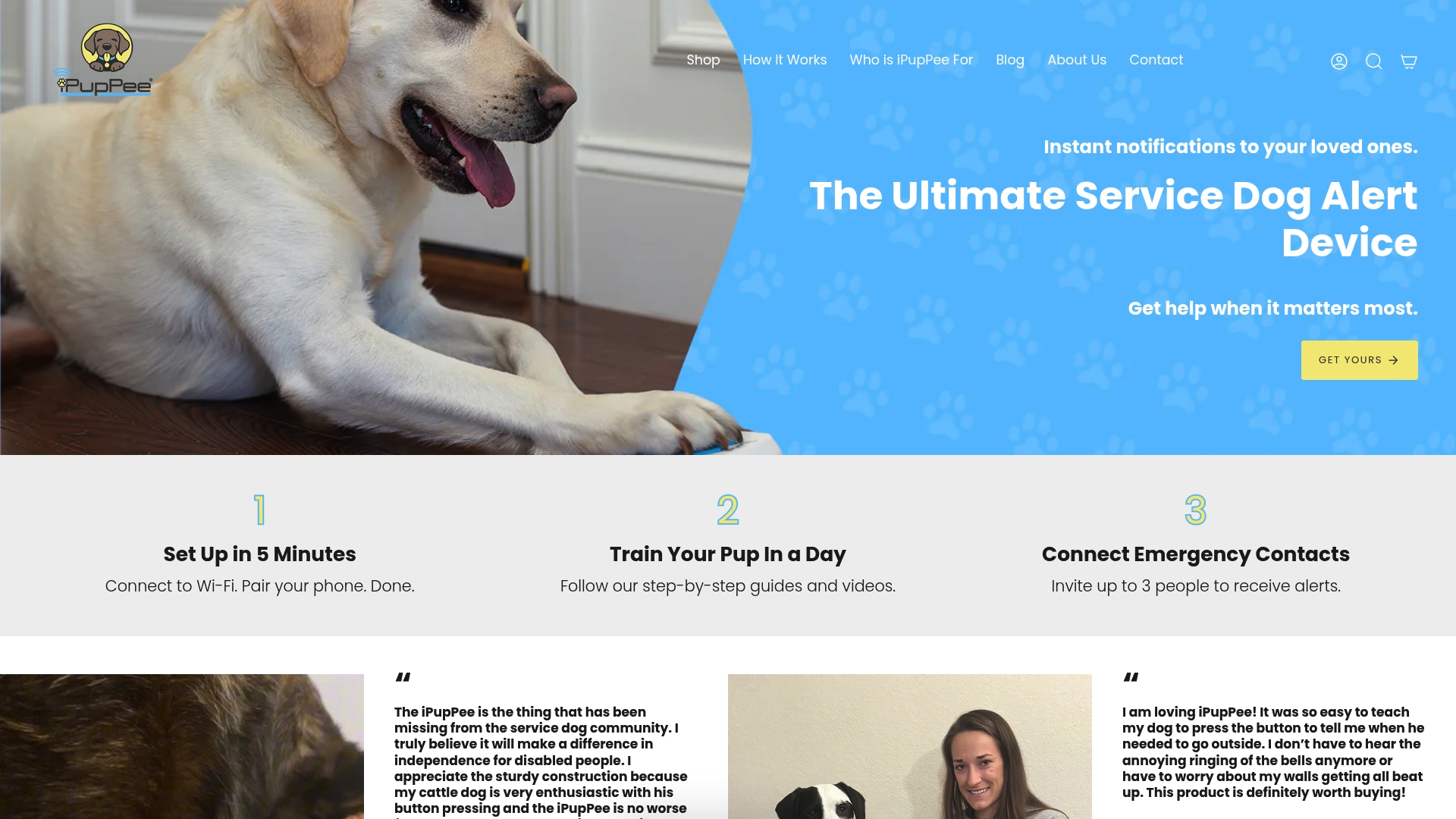
Experience how a purpose-built alert device makes a lifesaving connection simple. The iPupPee was created to translate your dog’s alerts into clear, actionable notifications with just a press of a button. Designed for service dog handlers, seniors, or anyone who needs extra reassurance, our device blends training support, user-friendly resources, and proven results from real customers. See customer stories, discover the benefits, and shop with confidence today at https://ipuppee.com. Take action now and make reliable dog-human communication part of your safety routine.
Recommended
-
https://ipuppee.com/blogs/news/dog-alert-options-guide-2025)
-
https://ipuppee.com/blogs/news/dog-alert-signals-recognize-respond-2025)
-
https://ipuppee.com/blogs/news/dog-signal-training-guide-2025)
-
https://ipuppee.com/blogs/news/dog-behavioral-training-guide-2025)
-
https://ipuppee.com/blogs/news/training-techniques-for-dogs-guide-owners-handlers-2025)

